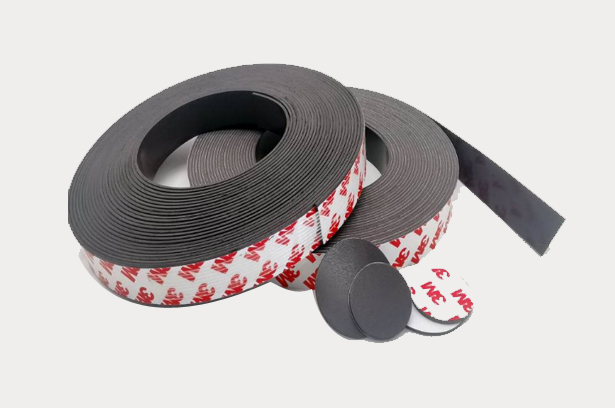0769-23388351
Toggle Navigation
About soft magnet and hard magnet, some friends may have heard about it, but it is not very clear. Today, Dongguan magnet manufacturer Courage Xiaobian gives you a detailed introduction, I believe you will understand after reading.
What is soft magnet? What is a hard magnet?
According to the difficulty of demagnetization after magnetization, magnetic materials can be divided into soft magnetic materials and hard magnetic materials. Soft magnetic materials are easy to remove after magnetization, of course, this material is also very easy to demagnetize. Material that is not easy to demagnetize is called hard magnetic material. Generally, the remanence of soft magnet is smaller than that of hard magnet.
What are the main soft magnets? In what ways are they used more?

Soft magnet mainly includes soft core and silicon steel sheet. Soft magnet is widely used as the path of magnetic line, that is, as magnetic conductive material. For example, transformer, sensor core, magnetic shielding cover, switching power supply, display, filter, yoke iron of special magnetic circuit, etc.
What are the main components of hard magnets? Main application areas?

Hard magnets are mainly sintered ferrite magnets, samarium-cobalt magnets, neodymium-iron-boron( Rare earth ndfeb magnets ) and iron oxide. Mainly used in motor, electrical appliances, electronics, medical devices, aerospace, smart home and other fields.
What is the difference between a soft magnet and a hard (permanent) magnet?
1、The name is different. Hard magnets are generally called permanent magnets, and soft magnets are called magnetic cores, such as manganese zinc nickel zinc.
2. Remaining magnetism difference. Hard magnets have remanence, while soft magnets have very little remanence.
3. Use difference. When the soft magnet is cut off, the magnetism will disappear immediately. When the hard magnetic material is cut off, a part of the magnetism will be left behind, and the iron core will become a magnetic field, which may be changing direction continuously. In this way, the transformer will become a generator, and the extra electricity from this part will cause damage to other electrical appliances. So this is why power transformers use soft magnets instead of hard magnets.
The high-end technology of ferrite soft magnetic materials is still in the hands of foreign companies. At present, overseas companies such as Magnetics in the United States, 3M in the United States, Amotech in South Korea, Lishu ISU in South Korea, and VAC in Germany all have a certain market share in the high-performance soft magnetic material market. Japan is the leader in magnetic material technology and has significant advantages in the high-end field. Companies include TDK, Toda Kogyo Corporation, Hitachi Metals, and more. Among them, TDK and TODA are mainly ferrite soft magnetic materials, and Hitachi Metals mainly produces nanocrystalline soft magnetic materials. Although the production capacity of soft magnetic materials in my country accounts for a high proportion, the products are mostly concentrated in the middle and low-end fields, the product value is low, and the profit margin is small. There is still a gap with foreign companies, and there is still some room for development in the future.
Conclusion:
Hard magnetic materials have strong remanence after removing the excitation magnetic field. The residual magnetic field of soft magnetic materials is very small after removing the excitation magnetic field.
The above is about the difference between soft magnet and hard magnet. Has it solved your doubts?
Similar magnet difference articles;
Difference between magnet zinc and nickel coating in hardness, life and price
What are the differences between smco magnets and ferrite magnets?
Product Name: 6x6mm cylindrical neodymium magnet, Color: silver white, Manufacturer: courage magnet, N35 is about 4100 Gauss, and n52 is about 4800 Gauss, We have a great price advantage in the production of high-performance magnets. We look forward to your consultation!...
This product is a small magnet, made of neodymium with galvanized surface. How small are these magnets? 5mm, 8mm in length, 2mm in width, 2.5mm in width, 1mm in thickness, 1.5mm in thickness, if you are interested in such small neodymium block magnets, you can tell us the size you actually need, and...
You are now viewing a ceramic ferrite ring magnet with 60mm bore (center hole), 120mm outer diameter, 20mm thickness, medium to large size magnet, no plating on surface, especially suitable for speakers, horns, salvage, fishing, and mechanical equipment,...
Introduction of small size ring neodymium magnet; Product name: Nickel-plated strong neodymium small ring magnet,Performance level: N35 (can be customized for higher performance),Product size: 8mm diameter, 2mm thickness, 4mm middle hole...
This is a thin rectangular block neodymium magnet, the specific specifications are length 40mm, width 25mm, thickness 1.5mm, strong magnetic force, N35 grade, magnetized in the thickness direction, suitable for ceiling lamps, crafts, home furnishing, electronic products, can be matched with 3M back glue to use....
This is a small size ring rare earth magnet, N38M grade, the outer diameter of the ring is 11mm, the hole is 2mm, which is also relatively small, the thickness is 5mm, the surface is plated with bright nickel, this type of magnet is suitable for passing through some thin shafts....
This is a very hot neodymium round magnet size, diameter 10mm, thickness 2mm, in many areas can be applied, the only difference is that different customers choose the coating, performance level and temperature resistance performance on the difference, the magnet weighs about 1.2g....
This product is a bowl-shaped magnet, because its shape is like the rice we eat. It is processed into a concave shape on the basis of a circular magnet, which belongs to the special-shaped magnet category. Our company is good at processing various complex special-shaped neodymium magnets. Welcome to all over the world. Customer service....